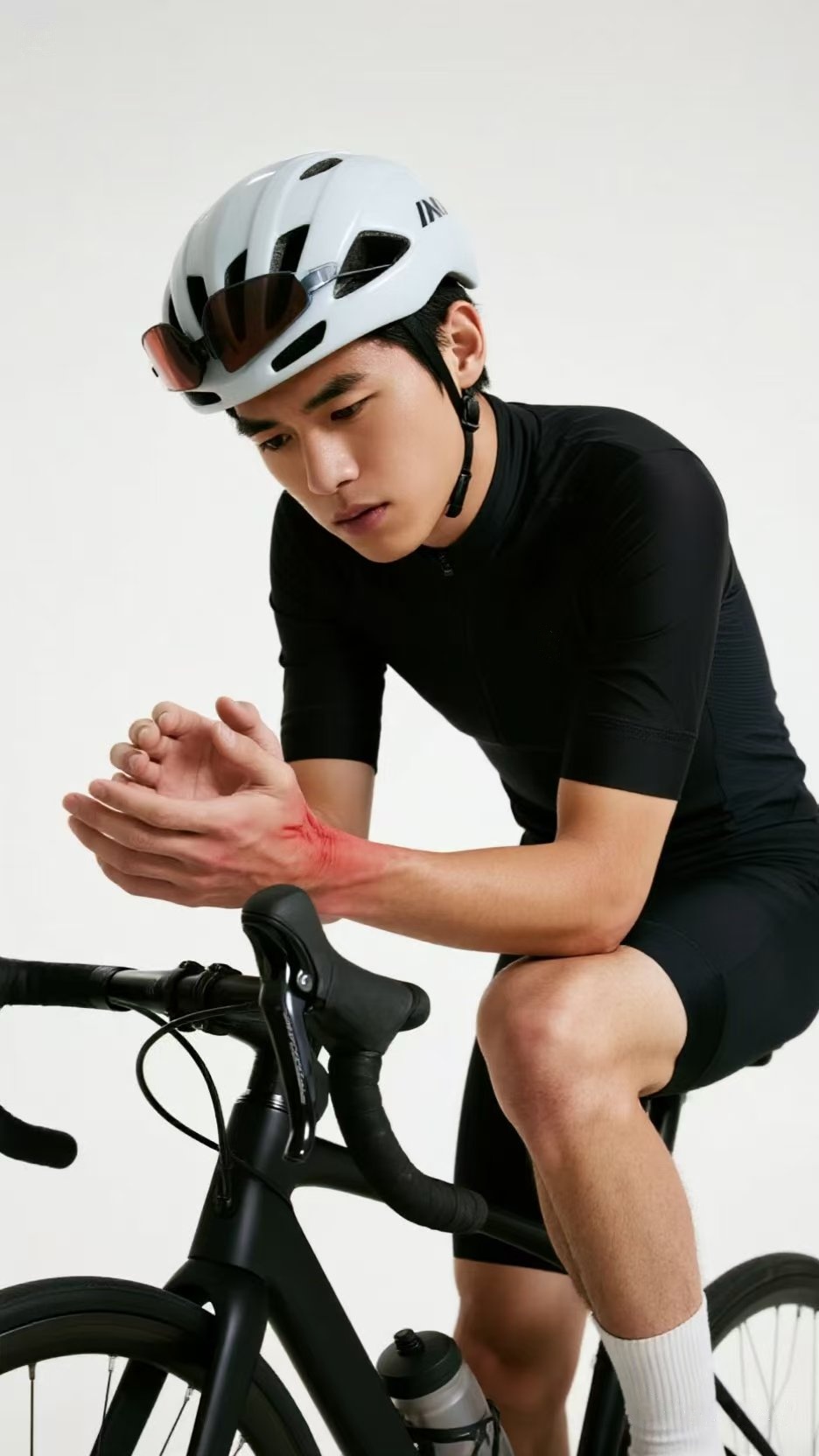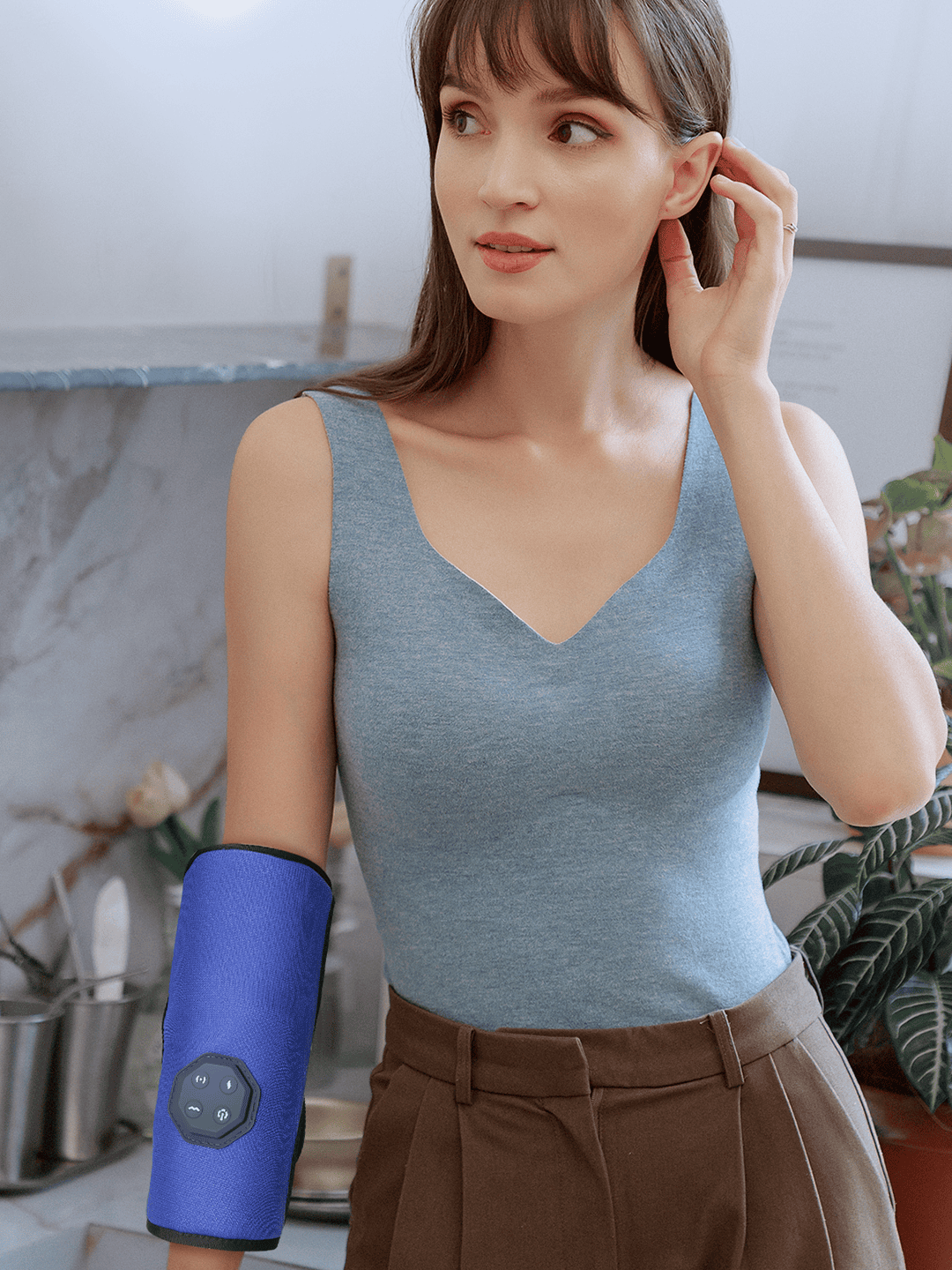Handheld Massager Safe for Arthritis? A User's Guide
- By Grace
- Updated on
It's a familiar feeling for so many of us, especially as we get older. After a day spent gardening, knitting, or even just typing away on a computer, our hands ache. In Canada, the popularity of the electric massager has soared, promising a spa-like treatment right in our living rooms. For those seeking relief, a personal handheld massager seems like the perfect solution. But a question I hear all the time is: are they actually safe? It’s a great question, particularly when you use one and see some temporary red marks on your skin.
This concern is completely valid. We want relief, not another problem. So, let's clear the air. We'll explore why those marks appear, what to look for in a safe device, and how you can get all the benefits without the worry. We want to empower you to make a choice that feels right for your body and brings you comfort, not caution.
Why Does My handheld massager Leave Marks?
Let's tackle the most common concern first: those temporary marks. You finish a lovely, warm massage session, pull your hand out of your new device, and see a pattern of little red dots or imprints. It's natural to feel a bit alarmed. But in most cases, this is a perfectly normal response to deep pressure. Think of it like the faint pink lines your socks sometimes leave on your ankles. These massagers often use air compression bags that rhythmically squeeze and release, stimulating deep tissues.
This process is designed to increase blood flow to the area, which is a key part of what makes the massage feel so good and helps reduce stiffness. The temporary markings are simply evidence of that pressure and increased circulation. This is a really, really common experience and is generally understood as part of how this deep-pressure equipment works. The important thing is to distinguish these harmless marks from actual bruising, which we'll discuss a bit later.

The Science Behind a handheld massager: How Does It Work?
Modern massaging units are sophisticated devices that combine several therapeutic techniques to deliver comprehensive relief. They are not just simple vibrating gadgets anymore. Understanding how your device works can help you appreciate the benefits and choose features that are right for you. It's not magic; it's technology designed to mimic the techniques a therapist might use.
Most quality units today use a combination of methods to soothe tired hands. Here’s a breakdown of what’s going on in a handheld massager:
- Air Compression: This is the core of most modern hand massagers. Internal airbags inflate and deflate in a programmed sequence, creating a squeezing and releasing motion that covers the entire hand, from wrist to fingertips. This action helps to gently stretch tissues, promote circulation, and relieve that tight, constricted feeling.
- Heat Therapy: A gentle, warming function is a fantastic feature, especially for those with arthritis or poor circulation. The warmth helps to relax muscles and ligaments, making the compression massage more effective and comfortable. It's a deeply soothing sensation that can significantly reduce pain.
- Vibration: A gentle, oscillating vibration can help to further stimulate blood flow and interrupt pain signals being sent to the brain. It adds another layer of sensory input that enhances the overall relaxation effect.
- Red Light Therapy (in some models): Some newer models incorporate red light, which some studies suggest may help reduce inflammation and promote cellular repair at a deeper level. While the evidence is still growing, it's a feature aimed at enhancing the therapeutic benefits.
The Great Debate: handheld massager Concerns vs. Benefits
This brings us to the heart of the matter for many Canadian consumers. The primary concern I hear about any electric massaging tool is the risk of it being too aggressive. Some devices might have intense pressure settings that aren't suitable for everyone. This is a valid worry. An overly aggressive device could potentially lead to bruising, especially in older adults who may have more fragile skin or blood vessels. It can also aggravate certain conditions if not used properly. This is why many shoppers are rightfully cautious.
When you find the right tool and use it properly, the benefits can be significant. It's about finding that sweet spot between effective pressure and gentle care. For many of my clients, a good massager has become an essential part of their daily routine for managing chronic discomfort. The benefits of a quality handheld massager, when used correctly, include:
- Relief from arthritis pain and stiffness.
- Easing symptoms associated with carpal tunnel syndrome.
- Reducing general fatigue and soreness from daily activities.
- Improving circulation, which is especially helpful in colder Canadian months.
- Promoting relaxation and reducing overall stress.
Choosing Wisely: Finding a Safe handheld massager in Canada
So, how do you navigate the market and find a device that offers all the good without the bad? It comes down to looking for features that put you in control. The single most important feature for any massaging tool is adjustable intensity. You should be the one to decide how gentle or deep the massage is, not the machine.
Health professionals in Canada often guide people toward a milder device. For example, a brand like Klcosy is frequently mentioned because its products typically emphasize a balanced approach. This isn't an endorsement of one single brand, but rather an example of the *type* of handheld massager to look for: one that prioritizes safety and user comfort through customizable settings. Look for clear descriptions, multiple modes, and low-to-high intensity levels. This ensures the device can adapt to your needs on any given day.
Smart Usage for Your handheld massager & Arm Care
Properly using your massager is key to safety and effectiveness, and the best advice is to start with a low intensity for 10-15 minute sessions. It’s also crucial to consider your total arm health, as hand pain can be connected to issues in the elbow or wrist. For general soreness or mild swelling in the forearm, an elbow compression sleeve provides gentle, uniform support and improves blood flow. However, for a specific diagnosis like tendonitis, a specialized elbow sleeve for tendonitis is a better choice, as it often includes targeted gel pads or straps for more direct relief. For severe issues like significant instability or post-injury recovery, a hinged elbow brace is recommended. Unlike a flexible sleeve, a hinged brace provides rigid support and controls the joint’s range of motion, protecting it from harmful movements. Distinguishing between the need for a compression sleeve, a targeted sleeve, and a full hinged brace requires professional guidance to ensure a holistic approach to your comfort.
Conclusion: Your Comfort in Your Hands
So, is a massaging tool safe? The answer is a resounding yes—with a crucial "if." A modern handheld massager is safe if you choose a quality device with adjustable settings and if you listen to your body. The temporary marks from a deep-pressure session are usually normal, but you should never feel pain or see bruising. By selecting a reputable, milder tool and starting slowly, you can confidently enjoy the incredible relief these devices offer. A good massager can be a wonderful tool for managing the aches and pains that come with a life well-lived, keeping your hands feeling their best for years to come.
Frequently Asked Questions
Are hand massagers safe for everyone?
They are safe for most people, but not for everyone. Individuals with certain conditions like severe osteoporosis, recent fractures or surgeries in the hand, open wounds, or specific skin conditions should avoid them. If you have a serious medical condition, it is always best to consult with your doctor before using any new therapeutic device, including a handheld massager.
Can I use a hand massager if I have diabetes?
This is a really important question that requires caution. People with diabetes can have reduced sensation in their extremities (neuropathy) and may be more susceptible to bruising or skin damage. Because you might not accurately feel the pressure, it's crucial to talk to your doctor or a diabetes specialist first. If they approve, you must use the handheld massager on the lowest possible setting and check your skin carefully after each use.
Are there any side effects of using a hand massager?
The most common side effect is temporary redness or imprints on the skin from the pressure, which is generally harmless and fades quickly. However, if a handheld massager is too aggressive or used for too long, potential side effects could include bruising, soreness, or aggravation of an existing injury. This is why choosing a device with adjustable intensity and using it as directed is so important.





